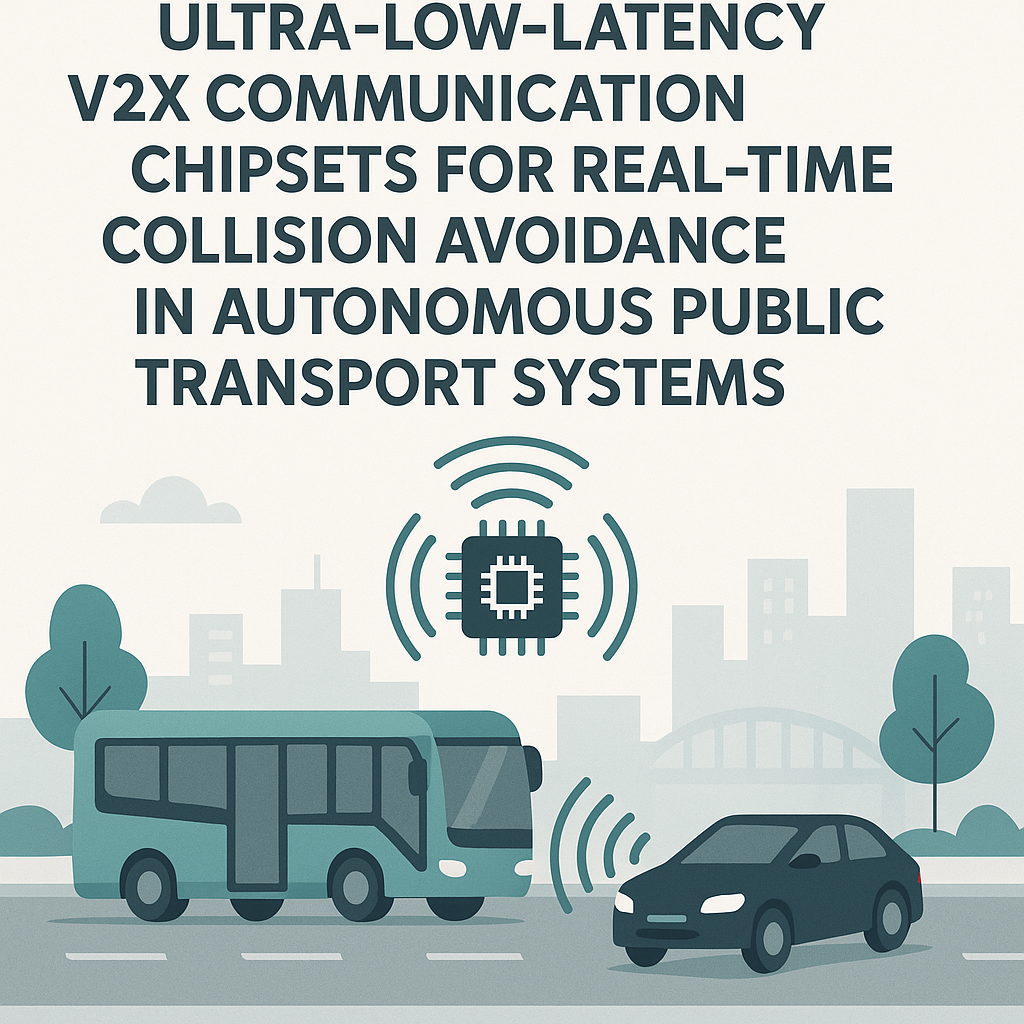Introduction
As the world moves towards autonomous public transport systems, the need for ultra-low-latency communication technology has become paramount. Vehicle-to-Everything (V2X) communication is essential for real-time data exchange between vehicles, infrastructure, and other elements in the environment. This blog explores the development of ultra-low-latency V2X communication chipsets that are crucial for enhancing safety and efficiency in autonomous transport systems.
Understanding V2X Communication
V2X communication enables vehicles to communicate with each other and with surrounding infrastructure. This technology can significantly reduce the risk of collisions and enhance the overall traffic management system. V2X can be broken down into several key components:
- Vehicle-to-Vehicle (V2V): Communication between vehicles to share information about speed, direction, and road conditions.
- Vehicle-to-Infrastructure (V2I): Interaction with traffic signals, road signs, and other infrastructure to optimize traffic flow.
- Vehicle-to-Pedestrian (V2P): Communication with pedestrians to ensure safety, especially in urban environments.
- Vehicle-to-Cloud (V2C): Data exchange with cloud services for enhanced data analysis and machine learning applications.
The Importance of Low-Latency Communication
In autonomous transport systems, timely communication is critical. Latency can be the difference between a safe maneuver and a potential accident. The development of ultra-low-latency V2X communication chipsets aims to minimize delays in information exchange, allowing for:
- Immediate Response: Real-time data sharing enables vehicles to react almost instantaneously to changes in their environment.
- Enhanced Safety: By reducing the time it takes for a vehicle to receive and process information, the likelihood of collisions is significantly decreased.
- Improved Traffic Management: With real-time communication, traffic signals and vehicles can coordinate more effectively, reducing congestion.
Technological Advancements in Chipset Development
The development of ultra-low-latency V2X communication chipsets involves several cutting-edge technologies:
- Dedicated Short-Range Communications (DSRC): This technology provides high-speed communication over short distances, essential for real-time interactions.
- Cellular Vehicle-to-Everything (C-V2X): Utilizing existing cellular networks, C-V2X offers broader coverage and reliability.
- Millimeter Wave Technology: These high-frequency bands provide higher data rates and lower latency, making them ideal for V2X applications.
- Advanced Antenna Technologies: MIMO (Multiple Input Multiple Output) systems improve signal quality and reduce interference, further contributing to low-latency communication.
Challenges in Chipset Development
Despite significant advancements, several challenges remain in the development of ultra-low-latency V2X communication chipsets:
- Interoperability: Ensuring compatibility between various manufacturers and technologies is crucial for widespread adoption.
- Scalability: As the number of connected vehicles increases, maintaining low latency across the network becomes more complex.
- Regulatory Compliance: Adhering to safety and communication standards set by governing bodies is essential for successful deployment.
- Cost: Developing and manufacturing advanced chipsets can be expensive, impacting the overall affordability of autonomous transport systems.
The Future of V2X Communication in Public Transport
The future of V2X communication in autonomous public transport systems is promising. With ongoing research and development, we can expect:
- Increased Adoption: As technology matures, more public transport systems will integrate V2X communication, enhancing safety and efficiency.
- Data-Driven Decision Making: The accumulation of real-time data will facilitate better traffic management and urban planning.
- Enhanced User Experience: Passengers will benefit from safer and more reliable transport options, leading to increased public confidence in autonomous systems.
Conclusion
The development of ultra-low-latency V2X communication chipsets is essential for the safe and efficient operation of autonomous public transport systems. By enabling real-time communication between vehicles and infrastructure, these technologies promise to revolutionize how we think about transportation. As challenges are overcome and technology continues to evolve, the future of public transport looks brighter than ever.



